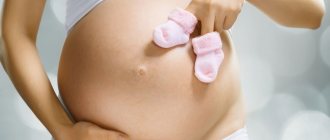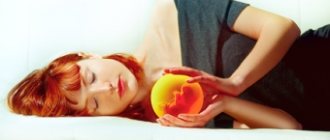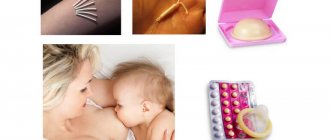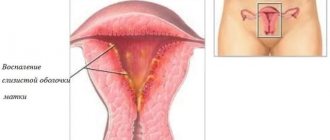Several decades ago, the problem of infertility mercilessly deprived women of the joy of motherhood. However, today modern medicine offers to solve such difficulties using a variety of methods, one of which is stimulation of pregnancy. As is known, it can be carried out in various ways, and only in cases where there are appropriate indications and purposes for this. What kind of procedure is this and how it is carried out, we will try to find out together with you today.
Pregnancy stimulation method
Stimulation of pregnancy involves drug imitation of the natural cycle of egg maturation in the female body. In other words, if the fair sex has problems with ovulation, taking special medications can start the process of forming a full-fledged egg that will be suitable for fertilization.
Note that impaired maturation of eggs and their release from the ovary are associated with various health problems. In this regard, a woman cannot fully conceive a child naturally. Such cases are classified as one of the forms of infertility, which, as a rule, is provoked by endocrine disorders, excess or lack of weight, as well as other abnormalities in the body.
Currently, this method is also called ovarian stimulation. And it is used quite widely. And when used correctly, 60-75% of women who seek help successfully become pregnant and bear healthy babies. This method is suitable for owners of healthy eggs, which, due to various reasons, cannot mature to the required size.
How is ovulation stimulation done?
How does ovulation stimulation occur? Today there are three schemes of this technique for stimulating ovulation.
- According to the first of them, from the second to the fifth day of the cycle (counted from the beginning of menstruation, with a 28-30 day cycle), the patient is administered anti-estrogenic drugs with regular monitoring of the situation using ultrasound on an individual schedule. At the time of follicle maturation (day 14-16), the woman takes a hCG-based drug and has sexual intercourse. Starting from day 16, progesterone-containing products are added to the prescriptions for 10-14 days. Then on days 17-19 an ultrasound is done again.
- The use of the second regimen involves the use of gonadotropic drugs, also starting from 2-3 days under constant ultrasound monitoring.
- The third scheme is a combination of the first two. Antiestrogens are used first, then gonadotropins and, at the very end of the cycle, progesterone drugs.
Contraindications
Stimulation of the ovaries or stimulation of pregnancy is considered a serious intervention in the process of the holistic functioning of the woman’s body. In this regard, there are a number of cases when this method is prohibited from being used to conceive a baby. So, these include:
- Hereditary diseases. If there are gene or chromosomal abnormalities in the germ cells, it is strictly contraindicated to use this method.
- Ovarian hyperstimulation. This syndrome develops as a result of an excess of sex or pituitary hormones with enlarged edematous ovaries. A similar state is achieved during self-medication to stimulate the ovaries.
- Inflammatory processes. It is contraindicated to stimulate pregnancy during inflammation in the ovaries, uterus, tubes, as well as in the presence of sexually transmitted infections.
- Other restrictions. First of all, these are age, severe diseases of the liver, kidneys and heart.
Stimulation of ovulation using folk remedies
Since ancient times, problems of female infertility have been solved with the help of traditional medicine, using decoctions and infusions from a wide variety of medicinal herbs and plants.
The most popular of them for stimulating ovulation is rightfully considered a storehouse of phytoestrogens - sage . Its herb in the form of a brewed infusion has been used to stimulate the ovaries for several centuries. Plantain is also considered an effective remedy , a decoction of the seeds of which is consumed orally, and baths are taken with a decoction of the roots and leaves. Rose petals, juice from quince fruit, ramishia grass - this is what nature can do to help a woman who wants to get pregnant.
In addition, therapeutic mud, aromatherapy, special massage and diets rich in estrogens and vitamins B, E and C
Where to start and how to carry it out
In order to undergo ovarian stimulation, you should first undergo a medical examination, which will provide complete information about the readiness of the female body for this procedure. Therefore, the couple is asked to do:
- blood test for the presence of infections - syphilis, HIV, hepatitis, latent and genital;
- examination of the genital tract - identification of genital tract infections in both spouses;
- smear tests - to determine the cleanliness of the vagina and cancer markers;
- blood test to detect antibodies to rubella.
Next, you need to conduct a general examination with a therapist . In this case, the doctor must give additional opinions about the woman’s health and ability to bear a child. In addition, the woman must be sent for an ultrasound to assess the condition of the breasts, pelvis and ovaries. According to the rules, observation is carried out over three menstrual cycles to eliminate errors in the preliminary diagnosis.
Why did pregnancy not occur after stimulation?
An indispensable condition for pregnancy is ovulation. Not so long ago, the absence of ovulation (anovulatory cycle) meant only one thing: infertility.
Today, doctors successfully stimulate ovulation; the selection of a regimen occurs individually, taking into account the anamnesis and physiological characteristics of each woman.
However, there are also general stages: let's figure out when a doctor can resort to ovulation stimulation, what examinations need to be completed before this, and what is the effectiveness of this procedure.
Ovulation and its absence
Once a month, several eggs from a huge reserve in a woman’s ovaries “wake up” under the influence of hormones and begin to grow. This is the start of the menstrual cycle (usually it coincides with the first day of menstrual bleeding).
After a week or a week and a half, a dominant follicle stands out among them, sometimes two or three, the size of which is larger than the others and reaches 15–20 mm. After a few days, the egg matures completely, and then the follicle membrane ruptures.
This release of a fully mature egg is called ovulation.
Next, the egg enters the abdominal cavity and immediately into the fallopian tube, where it waits for a fateful meeting with the sperm throughout the day. If it does not occur, fertilization does not occur, the egg dies and the uterus rejects the outer layer of the endometrium. Menstruation begins, the cycle repeats from the beginning.
”Ovulation does not necessarily occur in every menstrual cycle; Thus, the body can “cancel” potential fertilization if, within a month, a woman has experienced severe physical or psychological stress, or also suffered a serious illness.
However, if ovulation does not occur for six months, then the presence of an anovulatory cycle .
A way out of this situation (and, accordingly, a solution to the problem of infertility) can be stimulation of ovulation. Its essence is to find out the reason that does not allow the egg to mature and reach the ovulation stage, and to influence the ovaries with certain medications that, instead of hormones, will “push” the egg to grow.
Anovulatory infertility can be caused by:
overweight or, on the contrary, underweight woman.
If infertility is due to these factors, your doctor may suggest ovulation stimulation. Ovulation is also stimulated if preparations are being made for in vitro fertilization (for selection, as many simultaneously matured eggs as possible are needed), as well as in case of infertility, the causes of which could not be determined.
Examination before ovulation stimulation
Before proceeding with ovulation stimulation, the doctor will necessarily conduct a series of studies, since there are a number of contraindications for this procedure.
inflammation of the pelvic organs, primarily the ovaries;
disruption of the patency of the fallopian tubes (if ovulation stimulation is not carried out for the purpose of collecting eggs for in vitro fertilization);
serious hormonal disorders, which may worsen due to drug stimulation of ovulation.
A relative contraindication is a low ovarian reserve, that is, a small number of eggs that, in principle, can mature to the ovulation stage.
Typically, risk groups include women over 35 years of age and those who have undergone surgery on the ovaries - in this case, active intervention can prematurely deplete the ovaries and, in fact, bring menopause closer.
Before the doctor decides on stimulation, the expectant mother will have to undergo the following medical examinations:
Ultrasound of the pelvic organs and mammary glands;
study of the patency of the fallopian tubes (either laparoscopy or fluoroscopy with a contrast agent);
folliculometry (i.e., ultrasound examination of follicle growth during one menstrual cycle).
blood test to determine the level of: female sex hormones (estrogen, progesterone), luteinizing and follicle-stimulating hormones, thyroid hormones, prolactin and testosterone.
As a result, the doctor will be able to determine with a high degree of probability whether infertility is associated with the lack of ovulation (and why it is absent), or caused by some other reasons (and stimulating ovulation is useless and even harmful).
If stimulation of ovulation is required, then before it begins, you need to undergo the same procedures and tests as when preparing for pregnancy, because stimulation should lead to exactly this pleasant result.
examination by a therapist who will determine whether there are any contraindications for pregnancy at the moment (due to diseases not related to the reproductive system);
blood test for antibodies to HIV and RW;
cultures for the presence of candidiasis, trichomoniasis, mycoplasmosis, ureaplasmosis and gardnerella (or PCR analysis to determine the latter).
determination of antibodies to rubella, toxoplasmosis, chlamydia, cytomegalovirus (TORCH complex).
Selection of an ovulation stimulation scheme
Important! Only a doctor can select a stimulation scheme; Taking hormonal medications is possible only under the direct supervision of a doctor!
Many means are used to stimulate ovulation, but all of them can be divided into four groups according to their principle of action:
suppressing estrogen production (the level of follicle-stimulating hormone, FSH, is approaching the norm), for example, Duphaston, Clostilbegit;
directly increasing the level of follicle-stimulating hormone, for example, “Puregon”;
containing follicle-stimulating and luteinizing hormones (LH), for example, Pergonal, Menopur;
means that stimulate rupture of the follicle membrane, for example, Pregnil.
The doctor will not necessarily use drugs from one group; Perhaps in your case it will be better to combine several remedies. The specialist will make a decision based on your hormonal levels, general health and the success of previous stimulations, if this is not the first time you are trying to get pregnant this way.
How many times can you stimulate ovulation?
” Important! Stimulation of ovulation is a procedure that depletes the ovaries, so this procedure cannot be repeated endlessly. There is a rule among specialists: ovarian hyperstimulation is carried out no more than 5-6 times.
Stimulation process
To perform ovarian stimulation, you must wait until the menstrual cycle begins. From this day the counting of the days of the cycle itself begins. As a rule, medications are used for the procedure, for example Clomiphene. It is prescribed from days 3 to 7 of the cycle in certain doses. Then ultrasound monitors and monitors the growth of follicles.
When 1-2 of them are ripe, gonadotropin injections are given in the middle of the cycle during ovulation. This substance causes ovulation. Hormonal medications act in a similar way. During the period of ovulation, the doctor recommends having sexual intercourse daily, or every other day with concomitant use of the drug Duphaston in the 2nd phase of the cycle. If ovarian cysts form during stimulation, treatment is stopped for 3-4 months with a review of drug doses. However, you should not despair ahead of time, do not lose hope and fight on!
Who got pregnant after ovarian stimulation: reviews
Reading time: min.
No time to read
Stimulation of ovulation: who has this procedure helped? Ovulation stimulation: forum and reviews on it - what can they tell you? Ovarian stimulation, reviews of which are usually positive, has already been carried out in quite a large number of women who experienced serious problems conceiving a baby. What exactly do women say about this matter on various sites and forums?
Stimulation of ovulation by Gonal: reviews
Below are reviews of women who had to deal with ovulation of the ovaries with Gonal.
- I had to ovulate my ovaries with this drug only once. Despite her own ovulation, the doctor decided that just such a medical procedure was necessary. Of course, it was a little exciting and alarming. My husband and I were thinking about potential in vitro fertilization because we had been unable to conceive a child for a significant period of time.
Gonal stimulation in my case was prescribed on the fifth, seventh and eighth days of the menstrual cycle. On the tenth day of the cycle, one follicle burst.As for the endometrium, its growth was observed in positive dynamics. After the hCG injection, my husband and I actively tried to conceive a child, which ultimately led to the expected result.
That is why I can call the ovarian stimulation performed effective. (Inna, 30 years old)
- After using Gonal, the ovaries began to really work actively. Before this, my doctor prescribed me ovarian stimulation with Clostilbegit and such a noticeable effect as after Gonal was not observed as a result of its use. What else I would like to note is the excellent growth of the endometrium on this drug. Overall I am satisfied with the stimulation. (Irina, 26 years old)
Reviews after ovulation stimulation by Puregon
Puregon: stimulation of ovulation (reviews) - who got pregnant? This question worries those representatives of the fair half of humanity who are yet to undergo stimulation with this means. What do women say about this drug?
- I underwent stimulation with Puregon. This happened after unsuccessful stimulation of ovulation, carried out with the help of Clostilbegit. What do you want to say? Ovulation occurred, but pregnancy never became a reality. Then the doctor decided to send her husband for examination. I was prescribed vitamins and soon my own ovulation occurred, after which I managed to get pregnant. So I can’t say anything definite about Puregon. (Arina, 29 years old)
- I would like to leave an extremely positive review regarding the use of Puregon. This was my first stimulation, and I hope it will be my last. The scheme that was used during stimulation was as follows: the use of Puregon at the initial stage, then, if I am not mistaken, there was Orgalutran and Pregnil. I did not need large amounts of Puregon as my ovaries showed a good response to ovulation stimulation. After the puncture of the eggs, hyperovulation began and IVs were needed. It wasn't easy, but I don't regret anything. In the forty-first week, I gave birth to a daughter on my own, although the doctors did not advise, everyone was unanimous in favor of a caesarean section. (Alla, 30 years old)
Forum: who benefited from hCG stimulation of ovulation (reviews)
What do women say about using human chorionic gonadotropin injections? As a rule, they are used to sharing such information on special forums that are dedicated to stimulating ovulation and planning pregnancy.
- It was possible to conceive a child immediately after an injection of human chorionic gonadotropin. Ten days after the injection, the test showed a positive result. Of course, this was a great joy for our little family. Unfortunately, it was not possible to maintain the pregnancy. It is for this reason that we will soon be planning a baby again. (Alena, 32 years old)
- Pregnancy after stimulation of ovulation with clostilbegit. My first stimulation took place with the use of Clostilbegit. During its course, the size of the follicle reached eighteen millimeters, but it did not burst. During the second procedure of ovarian stimulation, the doctor decided to inject gonadotropin when the size of the grown follicle was nineteen millimeters. After this, the long-awaited pregnancy finally became a reality. Today the baby is six months old. To all those who cannot get pregnant for a long time, I recommend the ovulation stimulation procedure. (Valentina, 27 years old)
Who got pregnant after ovulation stimulation?
Stimulation of ovulation: reviews and results - what are they really? Who did ovulation stimulation help get pregnant? There are actually quite a few such women. At the same time, one must also remember that there are women in the case of whom even such a procedure is powerless. All this depends on the individual characteristics of the female body and the current state of health.
When ovulation is stimulated, a dominant follicle may mature, and a pregnancy test will show a positive result. But the test for human chorionic gonadotropin may turn out to be negative, and, as a result, pregnancy will not occur.
What should a woman do if the ovulation stimulation procedure was ineffective? Firstly, there is no need to panic immediately after receiving unsuccessful results and lack of pregnancy. A negative result often helps to identify the factor that led to failure. It is in this case that the treatment tactics are re-selected by the doctor.
In addition, it sometimes happens that pregnancy occurs after some time after ovulation stimulation. The body decides for itself what and how is best for it specifically.
There is no need to rush into repeating ovarian stimulation if it is unsuccessful. You need to wait at least six months. If pregnancy does not occur as a result of waiting, the ovaries will at least have a rest from the hormonal load to which they have been subjected.
What else should be noted in this article? If a woman undergoes an ovulation stimulation procedure, she should do everything the doctor says and unquestioningly follow all his recommendations.
Source: https://ovarian-stimulations.ru/kto-zaberemenel-posle-stimulyaczii-yaichnikov-otzyivyi.html










